Related Research Articles
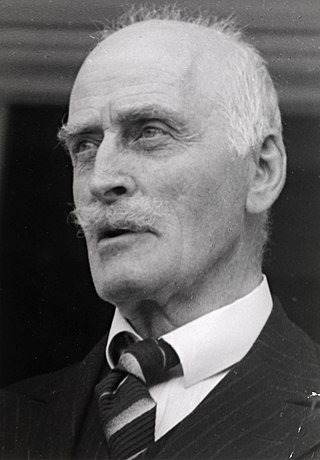
Knut Hamsun was a Norwegian writer who was awarded the Nobel Prize in Literature in 1920. Hamsun's work spans more than 70 years and shows variation with regard to consciousness, subject, perspective and environment. He published more than 23 novels, a collection of poetry, some short stories and plays, a travelogue, works of non-fiction and some essays.

Liv Johanne Ullmann is a Norwegian actress. Recognised as one of the greatest European actresses of all time, Ullmann is known as the muse and frequent collaborator of filmmaker Ingmar Bergman. She acted in many of his films, including Persona (1966), Cries and Whispers (1972), Scenes from a Marriage (1973), The Passion of Anna (1969), and Autumn Sonata (1978).

The Royal Norwegian Navy is the branch of the Norwegian Armed Forces responsible for naval operations of Norway, including those of the Norwegian Coast Guard. As of 2008, the Royal Norwegian Navy consists of approximately 3,700 personnel and 70 vessels, including 4 heavy frigates, 6 submarines, 14 patrol boats, 4 minesweepers, 4 minehunters, 1 mine detection vessel, 4 support vessels and 2 training vessels.
Oberstleutnant is a senior field officer rank in several German-speaking and Scandinavian countries, equivalent to lieutenant colonel. It is currently used by both the ground and air forces of Austria, Germany, Switzerland, Denmark, and Norway. The Swedish rank överstelöjtnant is a direct translation, as is the Finnish rank everstiluutnantti.

The Danish resistance movements were an underground insurgency to resist the German occupation of Denmark during World War II. Due to the initially lenient arrangements, in which the Nazi occupation authority allowed the democratic government to stay in power, the resistance movement was slower to develop effective tactics on a wide scale than in some other countries.

Sweden maintained its policy of neutrality during World War II. When the war began on 1 September 1939, the fate of Sweden was unclear. But by a combination of its geopolitical location in the Scandinavian Peninsula, realpolitik maneuvering during an unpredictable course of events, and a dedicated military build-up after 1942, Sweden kept its official neutrality status throughout the war. At the outbreak of hostilities, Sweden had held a neutral stance in international relations for more than a century, since the end of the Napoleonic Wars in 1814 and the invasion of Norway.

Jan Sigurd Baalsrud, MBE was a commando in the Norwegian resistance trained by the British during World War II.

The occupation of Norway by Nazi Germany during the Second World War began on 9 April 1940 after Operation Weserübung. Conventional armed resistance to the German invasion ended on 10 June 1940, and Nazi Germany controlled Norway until the capitulation of German forces in Europe on 8 May 1945. Throughout this period, a pro-German government named Den nasjonale regjering ruled Norway, while the Norwegian king Haakon VII and the prewar government escaped to London, where they formed a government in exile. Civil rule was effectively assumed by the Reichskommissariat Norwegen, which acted in collaboration with the pro-German puppet government. This period of military occupation is, in Norway, referred to as the "war years", "occupation period" or simply "the war".

Nine Lives is a 1957 Norwegian film about Jan Baalsrud, a commando and member of the Norwegian resistance during World War II. Trained in Britain, in 1943, he participated in an operation to destroy a German air control tower. This mission was compromised when he and his fellow soldiers accidentally made contact with a civilian rather than a Resistance member, who betrayed them to the Nazis.

The German occupation of Norway began on 9 April 1940. In 1942, there were at least 2,173 Jews in Norway. At least 775 of them were arrested, detained and/or deported. More than half of the Norwegians who died in camps in Germany were Jews. 742 Jews were murdered in the camps and 23 Jews died as a result of extrajudicial execution, murder and suicide during the war, bringing the total of Jewish Norwegian dead to at least 765, comprising 230 complete households.
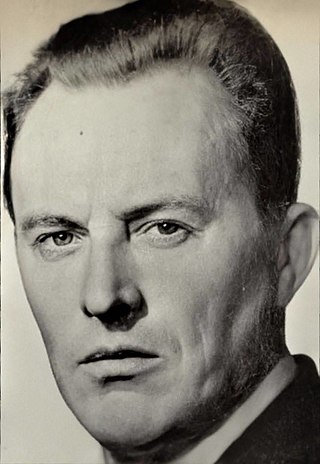
Asbjørn Edvin Sunde was a Norwegian politician for the Communist Party of Norway, communist partisan during the Spanish Civil War, saboteur against the Nazi occupation of Norway during the Second World War, and a convicted Soviet spy. During the Second World War, from 1941 to 1944, Sunde's group, the Osvald Group, carried out approximately 39 acts of sabotage and assassination against the German occupation forces and Norwegian collaborators. In 1954 he was convicted by Eidsivating Court of Appeal of treason and espionage in favour of the Soviet Union, and sentenced to eight years in prison. He was released from prison in 1959 after serving two thirds of his sentence. He was expelled from the Communist Party of Norway in 1970.

Gunnar Reiss-Andersen was a Norwegian lyric poet and writer.

Kristian Welhaven was a Norwegian police officer. He was chief of police of Oslo for 27 years, from 1927 to 1954. He was a leading force in establishing an organized Norwegian intelligence service before World War II, and in re-establishing it after the war. During the war years Welhaven was arrested by the Germans and imprisoned in both Norway and Germany, before spending the remainder of the war as a civilian internee in Bavaria.
Ørnulf Tofte was a Norwegian police officer and a major figure in the Norwegian intelligence service during the Cold War. He served as assistant chief of police and head of counter-intelligence in the Police Surveillance Agency. Tofte uncovered several illegal Soviet spies and personally arrested Asbjørn Sunde, Gunvor Galtung Haavik and Arne Treholt. Tofte was widely recognized for his role during the Cold War, and received the King's Medal of Merit in Gold in 1987. He published the biography Spaneren in the same year.
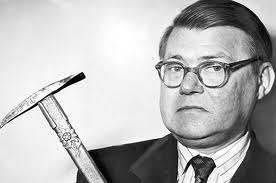
Harry Söderman was a Swedish police officer and criminalist. In his native Sweden, he went by the nickname "Revolver-Harry".
Wilhelm Münter Rolfsen was a Norwegian barrister, resistance member and film producer. During the German occupation of Norway he was actively involved in the resistance movement, particularly by organising a network for escorting refugees to Sweden. He took part as a prosecutor in the legal purge in Norway after World War II, and he wrote two books about his wartime experiences. He was involved in film productions, including Nine Lives and Struggle for Eagle Peak
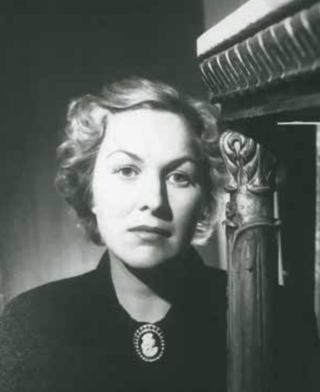
Liv Elisabeth Grannes was a Norwegian resistance member during World War II.
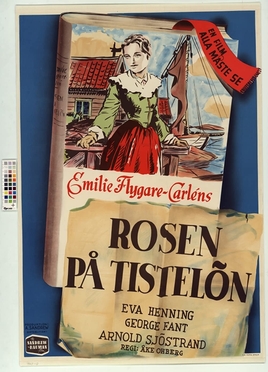
The Rose of Tistelön is a 1945 Swedish historical romantic drama film directed by Åke Ohberg and starring Eva Henning, John Ekman and Arnold Sjöstrand. It was shot at the Centrumateljéerna Studios in Stockholm. The film's sets were designed by the art director Bibi Lindström. It is based on the 1842 novel The Rose of Tistelön by Emilie Flygare-Carlén.
I slik en natt is a Norwegian war film from 1958 directed by Sigval Maartmann-Moe. It stars Anne-Lise Tangstad. The music was composed by Øivin Fjeldstad.
Wilfred Breistrand was a Norwegian actor and film director.
References
- ↑ Picart, Caroline Joan (2004). The Holocaust Film Sourcebook: Documentary and Propaganda. Westport, CT: Praeger. p. 39.
- ↑ Vibe, Nils (1977). Filmen i Norge etter krigen: historikk og innholdsanalyse. Stavanger: Rogalandsforskning. p. 54.
- ↑ Krawc, Alfred (1986). International Directory of Cinematographers, Set- and Costume Designers in Film: Denmark, Finland, Norway, Sweden (from the Beginnings to 1984). Munich: Saur. p. 280.
- ↑ "Faneflukt". Norsk filmografi. Nasjonalbiblioteket. Retrieved June 29, 2023.